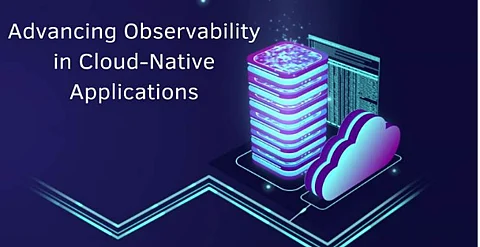

In a rapidly evolving digital landscape, cloud-native applications have redefined how businesses handle data analytics and system operations. While offering unparalleled flexibility, their dynamic and distributed nature presents significant challenges in monitoring and troubleshooting. Based on insights from Abhilash Nagilla, this article explores the latest innovations in observability frameworks tailored for cloud-native architectures. As an expert in cloud computing, he emphasizes the importance of implementing OpenTelemetry-based solutions to enhance system reliability, performance, and operational efficiency.
The growing intricacy of cloud-native applications requires sophisticated and advanced observability techniques. The traditional monitoring methods cannot seem to provide real-time performance insights into operations and applications due to sheer size and interconnectivity within microservices-based environments. Cloud-native observability frameworks including integrated logging, metrics collection, and distributed tracing cover all facets of a system's operational behavior; offices can thwart occurrence or avoid escalation of issues.
With increasing reliance on cloud infrastructure, the need for advanced observability tools has intensified. Now that applications operate across multiple data centers and cloud providers, companies must embrace robust monitoring tools able to provide unified visibility into disparate systems. This need seen has spurred the massive uptake of standardized frameworks such as OpenTelemetry.
One of the most promising advancements in this space is the adoption of a multi-layered observability framework. This approach includes:
● Logging Layer: Captures detailed logs across all application components, enabling real-time analysis of system behavior.
● Metrics Collection: Gathers performance-related data points, allowing for predictive analytics and automated anomaly detection.
● Distributed Tracing: Tracks transactions across multiple services, providing deep insights into system dependencies and potential bottlenecks.
By implementing these layers cohesively, organizations can significantly improve their system comprehension and issue resolution time. The ability to correlate logs, metrics, and traces ensures a holistic understanding of system performance, leading to faster debugging and proactive performance optimization.
OpenTelemetry has emerged as the leading standard for cloud-native observability. It offers a unified approach to collecting, processing, and exporting telemetry data. OpenTelemetry's key features include:
● Auto-Instrumentation: Seamless integration with major programming frameworks.
● Context Propagation: Ensures trace continuity across distributed systems.
● Adaptive Sampling: Reduces overhead by selectively capturing high-value data points.
Organizations leveraging OpenTelemetry have reported enhanced system reliability, reduced downtime, and improved troubleshooting efficiency. The ability to standardize data collection ensures interoperability across monitoring tools, reducing vendor lock-in and simplifying observability strategy implementation.
Automation plays a critical role in optimizing cloud-native observability. Intelligent algorithms powered by machine learning can analyze vast volumes of telemetry data, identifying patterns and predicting failures. Key automation strategies include:
● Dynamic Alerting: Real-time notifications for potential performance issues.
● Self-Healing Systems: Automated recovery mechanisms to mitigate disruptions.
● Resource Optimization: Smart allocation of computing resources based on demand patterns.
By integrating automation with observability frameworks, organizations can proactively manage their cloud environments with minimal manual intervention. Automated anomaly detection helps pinpoint performance degradation before it affects users, allowing engineers to resolve issues swiftly.
Effective observability practices contribute significantly to system resilience. Cloud-native applications often operate in highly volatile environments, making it essential to have robust monitoring solutions. Benefits of improved observability include:
● Faster Incident Resolution: Organizations experience a notable reduction in mean time to detection (MTTD) and mean time to resolution (MTTR).
● Greater Service Uptime: Reduced service disruptions lead to enhanced user experiences.
● Optimized Infrastructure Costs: Improved resource utilization translates to lower operational expenses.
Observability-driven reliability engineering deals with an application that can withstand unexpected load spikes and infrastructure failures without significant disruptions. The organizations that have implemented best practices in observability can construct highly resilient architectures that perform even in the worst scenarios.
As cloud computing continues to evolve, several trends are shaping the future of observability:
● AI-Powered Analytics: Leveraging artificial intelligence to derive actionable insights from telemetry data.
● Edge Computing Integration: Expanding observability to edge devices for a more holistic view of distributed environments.
● Standardization and Compliance: Growing emphasis on adhering to industry-wide observability standards to ensure interoperability and security.
These innovations will continue to enhance how organizations observe, assess, and improve their cloud-native applications. Further collaboration between AI and observability frameworks will propel automated root cause analysis and predictive maintenance, thus making troubleshooting faster and more effective.
In conclusion, the reflections of Abhilash Nagilla strongly reinforce the importance of observability improvement in cloud-native architectures today. Multi-layer frameworks, OpenTelemetry implementations, and automation will make possible much better view, efficiency, and reliability for organizations. The modernizations of cloud computing will continue developing upon observability, which is critical for the scalable and resilient digital architectures of future enterprises. They will be the first to fulfill the promises of the increasingly complex cloud environments within which their applications reside-never going down, always performing, and keeping costs low.
